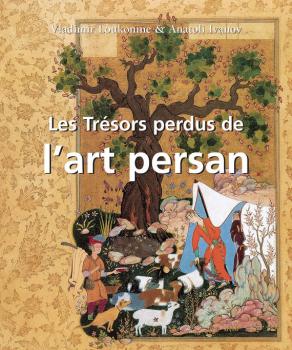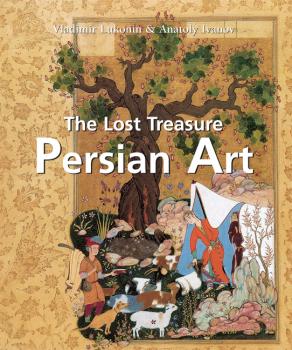ТОП просматриваемых книг сайта:
Vladimir Lukonin
Список книг автора Vladimir LukoninАннотация
Dans les pays d’Asie centrale, la stricte interdiction de représenter la figure humaine a permis de développer la création architecturale et son ornementation. Ce livre invite à un voyage magique dans cette région réunissant des civilisations anciennes (Kirghizistan, Tadjikistan, Turkménistan et Ouzbékistan), dépositaires des arts islamiques et bouddhistes. Les cités abandonnées de Merv, Urgench et Khiva sont présentées grâce à des photographies en couleur de qualité, qui emmènent le lecteur sur la « Route dorée de Samarcande », la mythique cité bleue.
Информация о книге
Автор произведения Vladimir Lukonin
Жанр Изобразительное искусство, фотография
Серия Temporis
Аннотация
Certains des trésors de l’art perse ont été conservés au musée de l’Ermitage à Saint Pétersbourg, et dans d’autres institutions culturelles de Moscou ou des anciennes républiques de l’Union soviétique. Pour la plupart, ils sont aujourd’hui disparus mais reproduits ici pour la première fois sous la forme de planches de couleurs. Depuis trois millénaires, cet art a conservé une unité certaine. Malgré les bouleversements politiques et religieux, il se caractérise par son raffinement, qu’il ait été produit par de simples artisans ou par des artistes de cour, en matière d’architecture, sculptures, fresques, miniatures, porcelaines, tissus ou même tapis.
Информация о книге
Автор произведения Vladimir Lukonin
Жанр Изобразительное искусство, фотография
Серия Temporis
Аннотация
The strict prohibition on the representation of the human form has channeled artistic creation into architecture and architectural decoration. This book is a magical tour through Central Asia – Khirgizia, Tadjikistan, Turkmenia, and Uzbekistan – a cradle of Ancient civilisations and a repository of the Oriental arts inspired by Buddhism and Islam. There are magnificent, full-colour photographs of the abandoned cities of Mervand Urgench, Khiva, the capital of the Kharezm, with its mausoleum of Sheikh Seid Allahuddin, and, the Golden Road to Samarkand, the Blue City, a center of civilisation for 2,500 years.
Информация о книге
Автор произведения Vladimir Lukonin
Жанр Изобразительное искусство, фотография
Серия Temporis
Аннотация
Housed in the Hermitage Museum along with other institutes, libraries, and museums in Russia and the republics of the former Soviet Union are some of the most magnificent treasures of Persian Art. For the most part, many of these works have been lost, but have been catalogued and published here for the first time with an unsurpassed selection of colour plates. In a comprehensive introduction, Vladimir Lukonin, Director of the Oriental Art section of the Hermitage Museum, and his colleague Anatoli Ivanov have broadly documented the major developments of Persian Art: from the first signs of civilisation on the plains of Iran around the 10th century BCE through the early 20th century. In the second part of the book they have catalogued Persian Art giving locations, origins, descriptions, and artist biographies where available. Persian Art demonstrates a common theme which runs through the art of the region over the past three millennia. Despite many religious and political upheavals, Persian Art whether in its architecture, sculpture, frescoes, miniatures, porcelain, fabrics, or rugs; whether in the work of the humble craftsmen or the high art of court painters displays the delicate touch and subtle refinement which has had a profound influence on art throughout the world.
Информация о книге
Автор произведения Vladimir Lukonin
Жанр Изобразительное искусство, фотография
Серия Temporis




